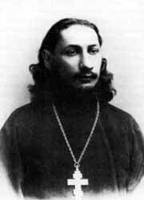"The commission of any artistic process is to be a force that captures the attention to reality itself. In other words should become a language, testimony to the reality. "
The correct expression of the unity of being is beauty, following a tradition that had orientation Solov'ev, Florenski recalls that "truth, good and beauty are one principle" and on this drive "the manifest truth is love. Love is made beauty. "
Florenski In the Russian tradition is also an element that is able to show in an exemplary manner the unity of all these features, and will be: the icon.
According to this tradition, the icon is not simply a religious image is itself a sacred image.
In this sense, for Florenski, the icon calls the role of Sophia (wisdom): is with "the reflection of the world to the roots" and "the image of the future world," allows us to jump on the time and watch "the world created by God in his beauty on earth." As a symbol, brings together two worlds and brings our world to the sky, not just "a window on reality," but when the saints shows us not merely to represent them rather comes in mind: in some way "not represents the testimony but the testimony itself. "
Testimony from the other world in this world, the icon turns to Florenski, but in the tragic conditions of Russia at that time, one of the last bastions of divine truth in the world: this becomes the direct testimony of Christ. Florenski defend as you did, did not mean to defend merely an object of worship or cultural value, but linking religion and culture to its origin, meant to defend the truth. The light exiting the icon, in fact, is the truth: the icon is, or at least want to be, first, truth of life, not a substitute for life, "but merely to indicate it symbolically in its deepest reality, "says Florenski, stressing at the same time the link that unites beauty and truth need not replace the reality with an image.
Dell'Asta
Adriano L'ubomir Zak
Adriano L'ubomir Zak


0 comments:
Post a Comment